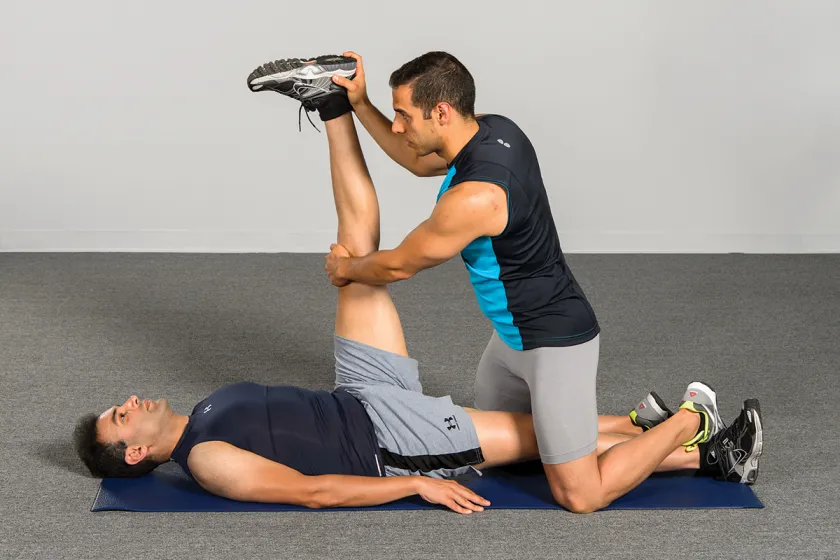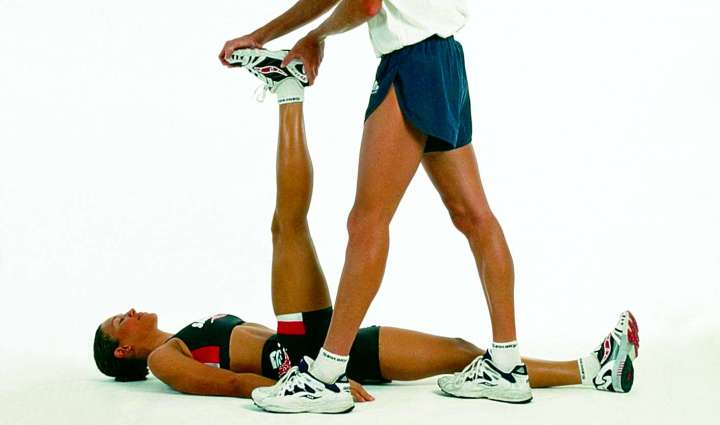PNF is a rehabilitation method based on the idea that all people, including children with cerebral palsy, have untapped motor potential. The key objective of this technique is to help the patient achieve the highest possible level of functioning for him.
PNF – proprioceptive neuromuscular thrashing. This is one of the varieties of kinesiotherapy, that is, movement therapy. The method is aimed at restoring healthy connections between the central nervous system and muscles.

Fundamentals of the PNF Method
The founder of the technique is German Kabat, who noted the fact that all movements that require serious effort are performed diagonally. The diagonal trajectory of motor skills has one indisputable advantage – it involves the maximum number of muscle groups in movement, which leads to the desired result. Muscle contractions take place with less effort than with rectilinear movements. PNF instructors use this knowledge to teach patients how to do any movement correctly and most effectively in a particular case.
The PNF technique helps to master those movements that are either still absent in the patient’s spontaneous motor skills, or their number leaves much to be desired. Using special grips, the specialist stimulates the necessary movements (patterns of movements) and ensures that the child gradually begins to perform the necessary actions independently.
PNF has developed about a dozen techniques that allow solving various problems and problems of patients:
- increase in strength;
- improved coordination of movement;
- developing the ability to hold a pose without movement and in movement;
- increase in endurance;
- elimination of contractures;
- increase in range of motion;
- development of movements necessary in life.
The PNF method involves close cooperation between the patient and the rehabilitator during classes. As a result of active interaction, a specialist can easily control the load and adjust the program, choosing the most relevant tasks at the moment.
The technique includes more than 100 special exercises focused on different muscle groups. The program of exercises in the Center is selected strictly individually, taking into account the needs of each child.
Philosophy PNF
Children diagnosed with cerebral palsy have unrealized physical potential, which a rehabilitation specialist should help to mobilize.
Any impact in the technique is directed to the whole body, and not just to the affected areas of the muscles. Proper work with those parts of the body that perform better and are less damaged allows you to train and include more parts of the body in the movements.
There is a use of the principles of motor learning and motor control: repetition in different contexts, a variety of initial positions and the observance of successive phases of motor control.
Active joint work of the child and the PNF instructor, classes in a positive way is the key to success.
PNF stimulation allows you to form, develop and consolidate movements at the level of the central nervous system, create new motor stereotypes, increase the motor activity of patients with cerebral palsy and other neurological pathologies. Using this technique, it is possible to indirectly work even with those muscles with which neuronal connections are lost. This is achieved by influencing the affected muscles with normally functioning muscle groups and body parts.

PNF method in rehabilitation programs
The PNF method allows you to work with children at any stage of development – walking, not walking, turning on their own or lying in one position. Each task that the instructor performs with the child has a specific purpose. Based on the analysis of the limits of possibilities and problems, we select an individual set of exercises, postures and positions that are currently important for this child.
We work with walking patients, and we also prepare difficult children with cerebral palsy and neurological abnormalities for verticalization. We carry out verticalization on a special table Tiet table, which combines a verticalizer table and a Galileo platform. The advantage of this device is that it is easy to select the angle of inclination and dose the load on the skeleton and muscles of the child.
The PNF method allows:
- correct gait;
- improve weight transfer;
- increase stride length
- increase stability and gait speed.
Whenever possible, with young children, PNF therapy is carried out in a playful way. Classes are conducted by a certified PNF instructor of the 5th level.
Often the trauma that has occurred to a child affects several areas of his life at once, not limited to the physical inability to perform previously habitual actions. In our Center, such patients receive comprehensive care. A whole team of specialists (a rehabilitation doctor, a physiotherapist, a speech pathologist, a psychologist, a neuropsychologist) can work with one child.
